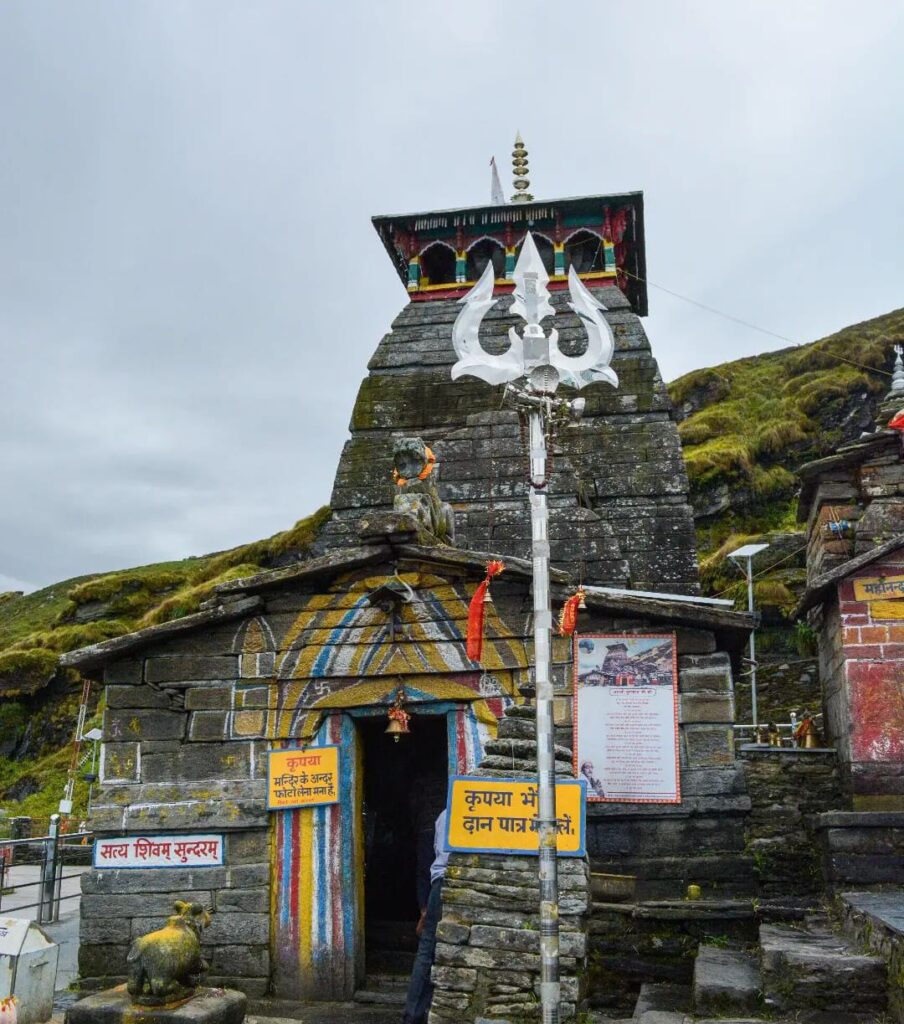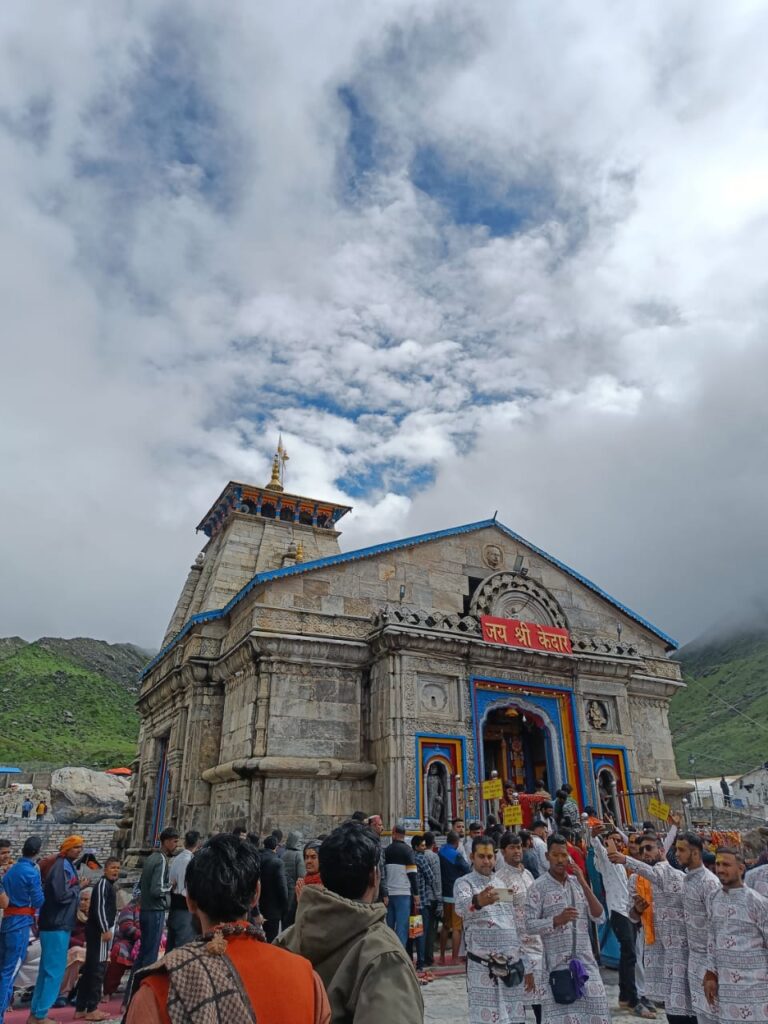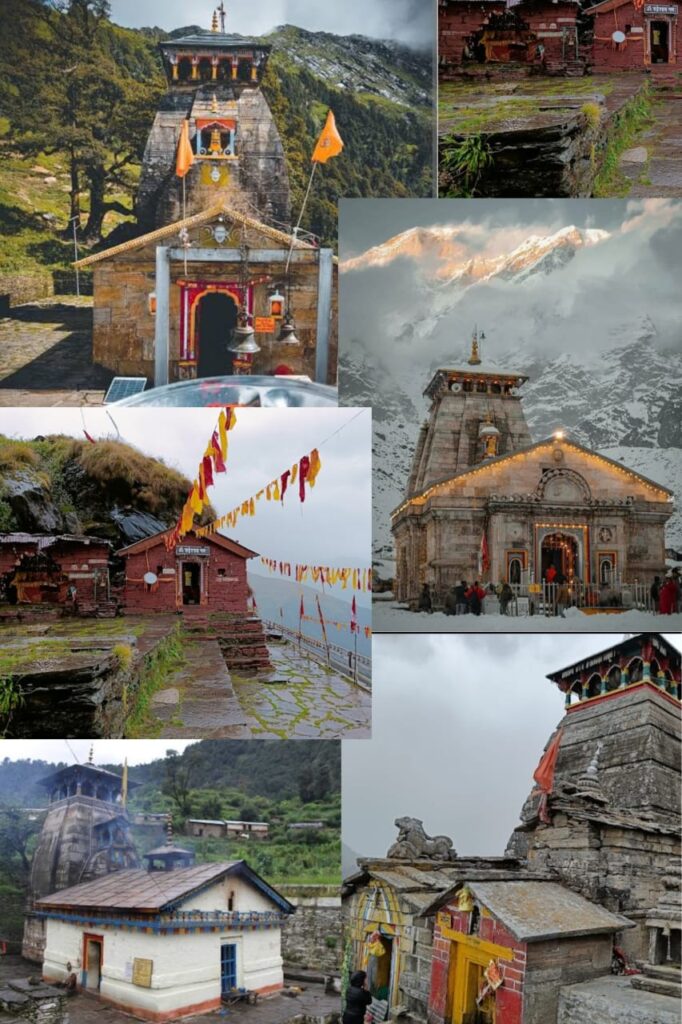Tungnath Temple is a beautiful and peaceful temple located in the Chopta region of Uttarakhand, India. It is considered as the highest Shiva temple in the world and is one of the most popular tourist destinations in the state. The temple is dedicated to Lord Shiva and is an important pilgrimage center for devotees of Hinduism. In this article, we will explore the history, significance, and beauty of Tungnath Temple.
History of Tungnath Temple
Tungnath Temple has a rich history that dates back to thousands of years. It is said that Lord Shiva meditated at this spot after killing the demon king Tripurasur. Legend has it that Lord Shiva was so pleased with the serenity and peace of this place that he decided to reside here permanently.
The temple has undergone several renovations and reconstructions over the years, but the main deity, a small idol of Lord Shiva, has remained intact. The temple is also said to be one of the five panch kedars, which are five shrines dedicated to Lord Shiva in the Kedar Khand region of Uttarakhand.
Significance of Tungnath Temple
Tungnath Temple is considered one of the holiest shrines in Uttarakhand and is an important pilgrimage center for devotees of Hinduism. The temple is considered to be the highest abode of Lord Shiva and is said to have spiritual powers that can cleanse one’s soul and purify one’s mind.
The temple is also considered to be a site for performing shradh, a Hindu ritual for the ancestors, and is believed to bring peace to the departed souls. The temple is also believed to grant boons to those who perform puja with a pure heart and devotion.
Beauty of Tungnath Temple
Tungnath Temple is located at an altitude of 3680 meters above sea level and is surrounded by the majestic Himalayan range. The temple is surrounded by lush green forests and is enveloped in a serene and peaceful atmosphere. The scenic beauty of the temple is simply breathtaking and provides a perfect backdrop for meditation and spiritual reflection.
The temple itself is a beautiful structure that is made of stone and is adorned with intricate carvings and paintings. The main deity, a small idol of Lord Shiva, is housed inside the temple and is surrounded by beautiful frescoes and paintings. The temple also has several smaller shrines dedicated to other Hindu deities and a small pond that is considered sacred by the devotees.
Visitors to Tungnath Temple can enjoy several trekking trails that lead to the temple. The trekking trails are surrounded by stunning scenery and offer a chance to experience the beauty of the Himalayan range up close. Visitors can also enjoy camping and bonfires in the nearby areas.
The best time to visit Tungnath Temple is between April and June, and between September and November. During these months, the weather is pleasant and the skies are clear, providing an unobstructed view of the Himalayas.
In conclusion, Tungnath Temple is a stunning and peaceful temple located in the Chopta region of Uttarakhand. It is an important pilgrimage center for devotees of Hinduism and is surrounded by beautiful scenery. Visitors can enjoy the peaceful atmosphere and stunning views of the Himalayas while visiting this magnificent temple.
The Spiritual Journey to Tungnath
The journey to Tungnath Temple is not only a physical one but also a spiritual pilgrimage for many. Pilgrims often start their trek from Chopta, a picturesque hamlet known as the ‘Mini Switzerland of Uttarakhand’. The path winds through dense forests of rhododendron and oak, offering a sense of communion with nature. Along the way, one encounters smaller shrines and sacred spots, each with its own folklore and significance.
Rituals and Festivals
Throughout the year, Tungnath Temple plays host to various religious festivals, drawing devotees from far and wide. Maha Shivaratri, dedicated to Lord Shiva, is celebrated with great fervor. The temple resonates with the sounds of devotional hymns, and the air is infused with the scent of incense and the warmth of lit lamps. It’s a time when spirituality and festivity harmonize.
Architectural Marvel and Iconography
The temple’s architecture itself is a marvel. Crafted from local stone, it stands as a testament to ancient craftsmanship. The intricate carvings and detailed paintings depict not only religious motifs but also stories from Hindu mythology. Each corner tells a tale, and every pillar carries a piece of history.
Trekking Routes and Adventure
For adventure enthusiasts, Tungnath offers a gateway to further exploration. Beyond the temple, trekkers can continue to Chandrashila Peak, which literally translates to ‘Moon Rock’. Standing at 4000 meters above sea level, it provides a panoramic view of the Himalayan range, including the grandeur of Nanda Devi, India’s second-highest peak.
Conservation and Eco-awareness
In recent years, efforts have been made to preserve the natural beauty surrounding Tungnath. Local initiatives and government interventions aim to maintain the delicate ecological balance of this region. Trekkers are encouraged to follow Leave No Trace principles, ensuring that this haven remains pristine for generations to come.
Local Culture and Hospitality
The villages around Tungnath exude a unique charm. The locals, deeply rooted in their traditions, offer warm hospitality to visitors. Homestays provide an opportunity to immerse oneself in the culture, savoring local cuisine and participating in age-old customs.
Safety and Precautions
Given its high altitude, it’s important for visitors to acclimatize properly. Sturdy trekking shoes, warm clothing, and ample provisions are essential. Additionally, it’s advisable to check weather conditions before embarking on the trek, as the Himalayan weather can be unpredictable.
The Living Heritage of Tungnath
Beyond its architectural and natural splendors, Tungnath is a living testament to the enduring spiritual heritage of India. The temple serves as a reminder of the ancient sages and seekers who sought solace in the Himalayas. It’s said that Adi Shankaracharya, the great philosopher and theologian, meditated in the vicinity of Tungnath, further sanctifying the region.
Flora and Fauna: A Symphony of Life
The Chopta region, where Tungnath resides, is renowned for its rich biodiversity. The forests here are home to a plethora of flora and fauna. Rare species of Himalayan birds like the Monal Pheasant, known for its vibrant plumage, grace the skies. The elusive musk deer, a symbol of this wilderness, roams in these woods. This ecosystem is a delicate tapestry that adds another layer of enchantment to the pilgrimage.
Yoga and Meditation Retreats
For seekers of inner peace and spiritual enlightenment, Tungnath offers an ideal setting. The serene ambience, coupled with the high altitude, makes it an optimal location for yoga and meditation retreats. Many ashrams and spiritual centers have sprung up around the region, providing seekers with a tranquil space for introspection and self-discovery.
Local Myths and Folklore
The tales and legends associated with Tungnath are woven into the very fabric of the land. From stories of celestial nymphs to encounters with benevolent forest deities, every rock and rivulet seems to have a narrative. These myths, passed down through generations, add a mystical aura to the entire journey.
Astro-tourism: Stargazing in the Himalayas
At night, Tungnath transforms into an observatory of the cosmos. With minimal light pollution, the sky unfurls its canvas, revealing a breathtaking expanse of stars. The Milky Way, like a luminescent river, flows across the firmament. It’s a rare opportunity for astronomy enthusiasts and stargazers to witness the celestial spectacle.
Community Initiatives and Sustainability
The villages surrounding Tungnath have taken commendable steps towards sustainability. Initiatives for waste management, afforestation drives, and harnessing renewable energy sources are shaping these communities into eco-conscious havens. This synergy between nature and humanity is a testament to the harmonious coexistence that is possible.
Silent Conversations with the Mountains
Tungnath isn’t just a temple; it’s a silent dialogue with the towering peaks. The Himalayas, often described as the abode of the gods, evoke a sense of reverence and wonder. They stand as sentinels of time, witnessing the ebb and flow of civilizations. To stand amidst these giants is to be humbled by the grandeur of nature.
The Journey Within
In the end, the pilgrimage to Tungnath isn’t solely about reaching a physical destination. It’s an inward journey, a quest for self-discovery and spiritual connection. The temple, the mountains, and the entire expedition become mirrors reflecting our own inner landscapes.
Final Thoughts
Tungnath Temple, nestled in the embrace of the Himalayas, beckons to all who seek solace, adventure, or a deeper understanding of themselves. It stands as a bridge between the material and the spiritual, inviting pilgrims and travelers to partake in its timeless mystique. Each step taken in its vicinity is a step closer to a higher plane of existence, a communion with the divine.
In Conclusion
Tungnath Temple is not merely a place of worship; it’s an experience that weaves together spirituality, nature, history, and adventure. Its magnetic pull goes beyond the religious, drawing travelers, trekkers, and seekers of inner peace. The temple stands as a testament to the enduring spiritual legacy of the Himalayas, inviting all to partake in its magic.


